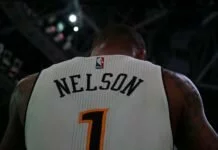DENVER — Patrick Roy chooses one of two paths when he feels his greatness has been challenged. He either rises to the occasion or he walks out. This pattern has been repeated throughout his career.
When Roy rose to the challenge, he was unstoppable—the greatest goaltender, bending a game to his will. When he walked out, it usually left the organization burning down behind him.
When he took over the as the Avalanche’s coach before the 2013-14 season, there were rumblings around the league that Roy could not coach in the NHL. Roy’s answer to those questioning him was an Avs’ division championship that year.
During that first year as coach, he was the Patrick Roy Avs fans knew. He was the goaltender who called a shutout in Game 6 of the 2001 Stanley Cup Finals and then delivered. He was the Patrick Roy who won the Stanley Cup in ’96 for the Avs when people thought he was washed up. He was the rookie goaltender lifting the cup for the Montreal Canadiens in 1986.
After the Avs had two poor seasons in 2014-15 and 2015-16, , Coach Roy was ready to watch the team burn—resigning last summer late in the offseason. This Patrick Roy was the goalie who stormed out on the Canadiens and demanded a trade to the Avalanche.
The last time Roy left the Avs also devastated the team. Back in 2003, after the Avalanche blew a 3-1 playoff series lead against the Minnesota Wild, Roy decided he had played enough. The Avalanche have never been to a Western Conference Finals since Roy retired. While less intentional, Roy’s story seemed clear. The Avs needed him.
Since he quit as coach, the Avalanche are now living in that burnout zone. This year, they will finish with one of the worst records for a team in NHL history that was not an expansion team. Roy’s sudden departure late last offseason felt calculated. Roy was on the hot seat with a roster he claimed to no longer control. Faced with taking the blame for the Avs’ fall, he took his pads off and went home.
This article will largely ignore personnel issues and instead focus on the coaches. To understand where the Avalanche are now, you have to understand the difference between Roy and current coach, Jared Bednar. Roy had traits Bednar doesn’t have. However, Bednar, or a similar coach, may be able to save this franchise if the Avs can find the right players.
*****
The glass-pushing incident in Roy’s first game defined his first year as an NHL coach. With the Anaheim Duck’s coach disrespecting the Avs late in the game, Roy lost his temper and went after Boudreau. The energy was amazing in the Pepsi Center that night and that season.
What Roy’s team lacked in hockey fundamentals, it made up for in tenacity, belief and excitement. The young Avs won games late, seemed to like each other and were ready to march forward. Roy was publicly boisterous, taking the pressure off of his team by carrying them with his energy.
Coach Roy was a great motivator. His belief in his players helped them succeed. He also encouraged creativity on offense, and the players thrived. The system, in the beginning, just required quickness and imagination. Players want to be a part of that kind of team.
I don’t know why Roy changed as a coach after that first year, but it was a change for the worse. If Roy’s energy had stayed the same, the Avs could have flourished with the right talent. In a league starved for personality, Roy was poised to develop into a public brand that could act as a shield for his team.
In 2014-15, the team failed to make the playoffs under a more subdued Roy. Maybe Avs General Manager and former teammate Joe Sakic asked Roy to calm down. Hockey observers who studied analytics may have pushed Roy to focus too much on stabilizing his team’s unpredictable style of hockey (the advanced stats hated Roy). Having proved his doubters wrong once, perhaps Roy felt less of a drive.
In year three, Roy seemed even less invested. It was obvious late in the season that he was disgusted with his team. He was bearded, gruff and lacked emotion. When Nathan MacKinnon and Matt Duchene fell to injury, Roy stoically watched the Avs wither away.
The blame fell on Roy after that season’s failure. It’s unclear whether General Manager Joe Sakic told Roy he held him responsible for the lack of success. However, through his actions, which included bringing back all of the Avs’ core players including the questionable decision to re-sign defenseman Tyson Barrie, Sakic seemed to be blaming the coach and not the players for the lost season.
Roy’s competence was again challenged. This time he chose that second option—he abruptly quit to watch the team crash He implied that he knew better than Sakic and the Avalanche what was needed for success. They needed him more than he needed them. With the Avs becoming the worst team in the league, the narrative proves Roy right.
The Avalanche have been here before. Former coach Joel Quenneville also told the Avs they didn’t have the talent to win—the Avs fired him. Quenneville has won three cups with the Blackhawks since then. The Avs haven’t won a playoff series since.
Roy must feel the same way. Much like the Denver Nuggets collapse after George Karl’s firing, it appears that Roy lifted the players up. The Avs and Nuggets were both wrong. The only difference, of course, was that Roy quit on the franchise that loved him the most.
*****
Mikhael Grigorenko is a good example of Roy’s influence. Acquired in the Ryan O’Reilly trade from Buffalo, the forward had his best pro season under Roy last year. Grigorenko played for Roy in junior hockey and was a more complete player back with Roy. He looked like part of the young core last year. This year, he looks like a player without a future.
It appears that Grigorenko needed a coach’s encouragement. You can throw the back half of the roster into this category. Roy was a great motivator—even the more subdued Roy of the past two years.
Of course, that motivating presence doesn’t last forever. The large amount of coaching turnover in the NHL (and pro sports) showcases this. Management across sports constantly looks for fresh voices to motivate teams. The Avs had that in Roy.
New coach Jared Bednar is not a player motivator. A career minor leaguer, Bednar believes players should motivate themselves. To him, personal responsibility within a system is the best way to go. After all, that’s how Bednar’s succeeded at every level—winning a championship last year as coach of the AHL Lake Erie Monsters.
In general, Bednar’s strategy is how great teams become sustainable. Motivating players works only as a short-term plan. Think about the kinds of teams that need to be motivated? It’s usually college teams or ones with short-term goals like Herb Brooks’ 1980 “Miracle on Ice” U.S. Olympic Hockey Team.
When you think of great coaches in sports, they hand pick players that are self-motivated. Bill Bellicheck and Greg Poppovich create cultures of personal responsibility. Steve Kerr and Joe Maddon are not giving locker room speeches to motivate their teams. They’re supporting players. After all, the great players don’t need someone else to motivate them—they need someone to enable the best in them.
The Avalanche need to figure out which players are self-motivating. The list is pretty short this season—Erik Johnson, Nathan MacKinnon, Mikko Rantanen, Gabe Landeskog and Matt Duchene. Maybe the goalies are self motivated, but who can tell with goalies? These are the types of players the Avs need on the bus. Now how do they build around them?
The blame for the lack of solid role players on the team must fall primarily on Sakic, but it is also an issue clouded by Roy. In truth, the Avalanche haven’t had self-starting teams since Sakic retired. It has been infuriating for eight years to watch the Avalanche take games off. That doesn’t happen often with self-motivated players.
Roy chose to stop being the driving force for the Avalanche. Now, to change the culture, the Avalanche must fill in players who are self-motivated. That’s the model to bring about success long term—with Bednar or another coach. Until they have that type of player and organization, they will continue to be mediocre at best. Until the day comes when the team doesn’t require a motivator as their head coach, Patrick Roy will continue to be the right man for the job. Hopefully, that day will come sooner rather than later.








